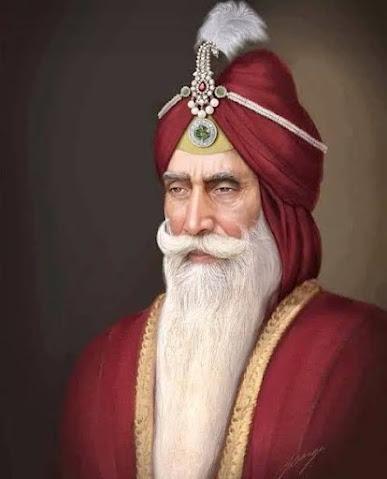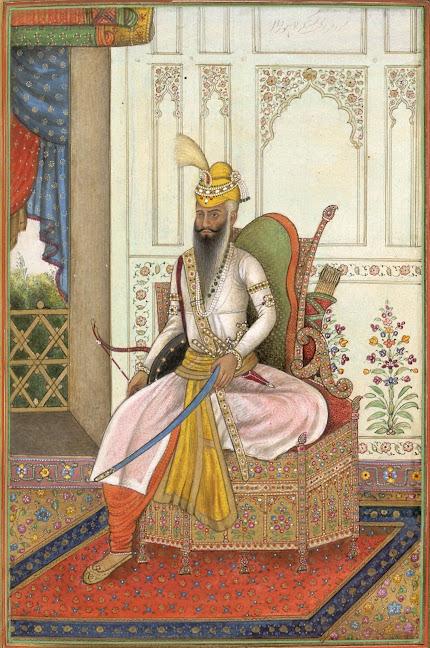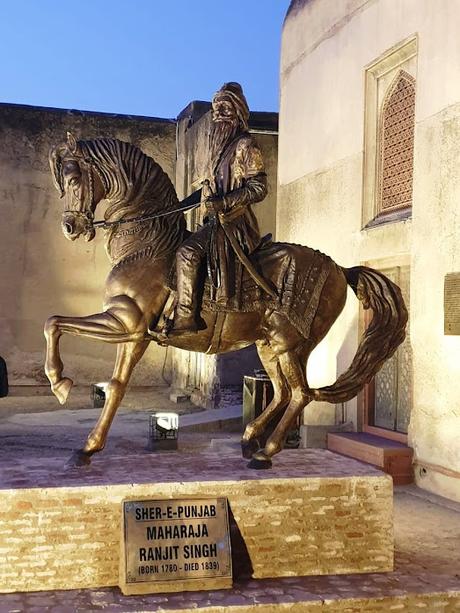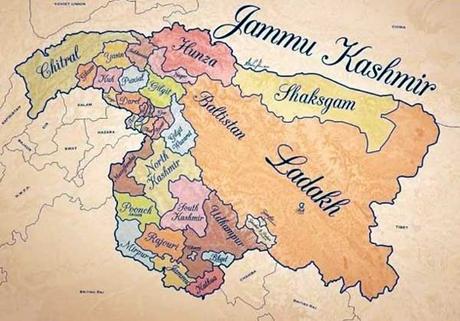Madhya Pradesh scripted history on Sunday as they registered their first-ever Ranji Trophy title win. The Aditya Shrivastava-led side triumphed over heavyweights Mumbai in the Finals by six wickets. Chasing 108, Madhya Pradesh took just 29.5 overs to get over the line and in the end.
Colonel H. H. Shri Sir Ranjitsinhji Vibhaji II, Jam Saheb of Nawanagar, GCSI GBE (1872 – 1933) often known as Ranji or K. S. Ranjitsinhji, was the ruler of the Indian princely state of Nawanagar from 1907 to 1933, as Maharaja Jam Saheb, and a noted Test cricketer who played for the English cricket team. He also played first-class cricket for Cambridge University, and county cricket for Sussex. The premier tournament Ranji Trophy is named after Ranjit Sinhji

Today’s post is on Ranjit Singh who died on this day 183 years ago ! – and nothing connected to Cricket. Ranjit Singh (2 November 1780 – 27 June 1839) was popularly known as Sher-e-Punjab ie., "Lion of Punjab", was the first Maharaja of the Sikh Empire, which ruled the northwest Indian subcontinent in the early half of the 19th century. He survived smallpox in infancy but lost sight in his left eye. He fought his first battle alongside his father at age 10. After his father died, he fought several wars to expel the Afghans in his teenage years and was proclaimed as the "Maharaja of Punjab" at age 21. His empire grew in the Punjab region under his leadership through 1839.
Prior to his rise, the Punjab region had numerous warring misls (confederacies), twelve of which were under Sikh rulers and one Muslim. Ranjit Singh successfully absorbed and united the Sikh misls and took over other local kingdoms to create the Sikh Empire. He repeatedly defeated invasions by outside armies, particularly those arriving from Afghanistan, and established friendly relations with the British. His Khalsa army and government included Sikhs, Hindus, Muslims and Europeans.
He is described as having had many marriages – in 1789, Ranjit Singh married his first wife Mehtab Kaur, the only daughter of Gurbaksh Singh Kanhaiya and his wife Sada Kaur, and the granddaughter of Jai Singh Kanhaiya, the founder of the Kanhaiya Misl. This marriage was pre-arranged in an attempt to reconcile warring Sikh misls. The separation became complete when Ranjit Singh married Datar Kaur of the Nakai Misl in 1797 and she turned into Ranjit's most beloved wife. Like his first marriage, the second marriage also brought him strategic military alliance. During the expedition to Multan in 1818, she was given command alongside her son, Kharak Singh. Throughout her life she remained Ranjit Singh's favorite. During a hunting trip with Ranjit Singh, she fell ill and died in 1838. Ratan Kaur and Daya Kaur were wives of Sahib Singh Bhangi of Gujrat (a misl north of Lahore, not to be confused the state of Gujarat). Of the others, Jind Kaur, was to be the final spouse of Ranjit Singh. On 6 September 1838 she gave birth to Duleep Singh, who became the last Maharaja of the Sikh Empire. Ranjit Singh married many times, in various ceremonies, and had twenty wives. In 1802, Ranjit Singh married Moran Sarkar, a Muslim nautch girl. This action, and other non-Sikh activities of the Maharaja, upset orthodox Sikhs, including the Nihangs, whose leader Akali Phula Singh was the Jathedar of the Akal Takht. When Ranjit Singh visited Amritsar, he was called outside the Akal Takht, where he was made to apologize for his mistakes.

After the death of Aurangzeb in 1707, the Mughal Empire fell apart and declined in its ability to tax or govern most of the Indian subcontinent. In the northwestern region, particularly the Punjab, the creation of the Khalsa community of Sikh warriors by Guru Gobind Singh accelerated the decay and fragmentation of the Mughal power in the region. Raiding Afghans attacked the Indus river valleys but met resistance from both organised armies of the Khalsa Sikhs as well as irregular Khalsa militias based in villages. Ranjit Singh's fame grew in 1797, at age 17, when the Afghan Muslim ruler Shah Zaman, of the Ahmad Shah Abdali dynasty, attempted to annex Panjab region into his control through his general Shahanchi Khan and 12,000 soldiers. The battle was fought in the territory that fell in Ranjit Singh controlled misl, whose regional knowledge and warrior expertise helped resist the invading army. This victory gained him recognition. In 1798, the Afghan ruler sent in another army, which Ranjit Singh did not resist. He let them enter Lahore, then encircled them with his army, blocked off all food and supplies, burnt all crops and food sources that could have supported the Afghan army. Much of the Afghan army retreated back to Afghanistan.
In 1801, Ranjit Singh proclaimed himself as the "Maharaja of Punjab", and agreed to a formal investiture ceremony, which was carried out by Baba Sahib Singh Bedi – a descendant of Guru Nanak. In 1802, Ranjit Singh, aged 22, took Amritsar from the Bhangi Sikh misl, paid homage at the Harmandir Sahib temple, which had previously been attacked and desecrated by the invading Afghan army, and announced that he would renovate and rebuild it with marble and gold. On 1 January 1806, Ranjit Singh signed a treaty with the British officials of the East India Company, in which he agreed that his Sikh forces would not attempt to expand south of the Sutlej river, and the Company agreed that it would not attempt to militarily cross the Sutlej river into the Sikh territory. The most significant encounters between the Sikhs in the command of the Maharaja and the Afghans were in 1813, 1823, 1834 and in 1837. On 25 November 1838, the two most powerful armies on the Indian subcontinent assembled in a grand review at Ferozepore as Ranjit Singh, the Maharajah of the Punjab brought out the Dal Khalsa to march alongside the sepoy troops of the East India Company and the British troops in India. In 1838, he agreed to a treaty with the British viceroy Lord Auckland to restore Shah Shoja to the Afghan throne in Kabul. In pursuance of this agreement, the British army of the Indus entered Afghanistan from the south, while Ranjit Singh’s troops went through the Khyber Pass and took part in the victory parade in Kabul.
The geographical reach of the Sikh Empire under Singh included all lands north of Sutlej river, and south of the high valleys of the northwestern Himalayas. The major towns at time included Srinagar, Attock, Peshawar, Bannu, Rawalpindi, Jammu, Gujrat, Sialkot, Kangra, Amritsar, Lahore and Multan.

Singh's most lasting legacy was the restoration and expansion of the Harmandir Sahib, the most revered Gurudwara of the Sikhs, which is now known popularly as the "Golden Temple".

As we read the British and Moghul history, this kingdom of Ranjit Singh did not even get a cursory in our school curriculum. It is clear that the grand powerful Sikh ruled over a big akhanda kingdom that included Punjab and most parts of present day Pakistan. His samadhi is in Lahore, Pakistan. On 20 August 2003, a 22-foot-tall bronze statue of Singh was installed in the Parliament of India and in June 2019, a nine-feet bronze statue of Singh was unveiled at the Lahore Fort at his 180th death anniversary.[ It has been vandalised several times since, specifically by members of the Tehreek-e-Labbaik Pakistan.
Interesting !
With regards – S. Sampathkumar27th June 2022.

